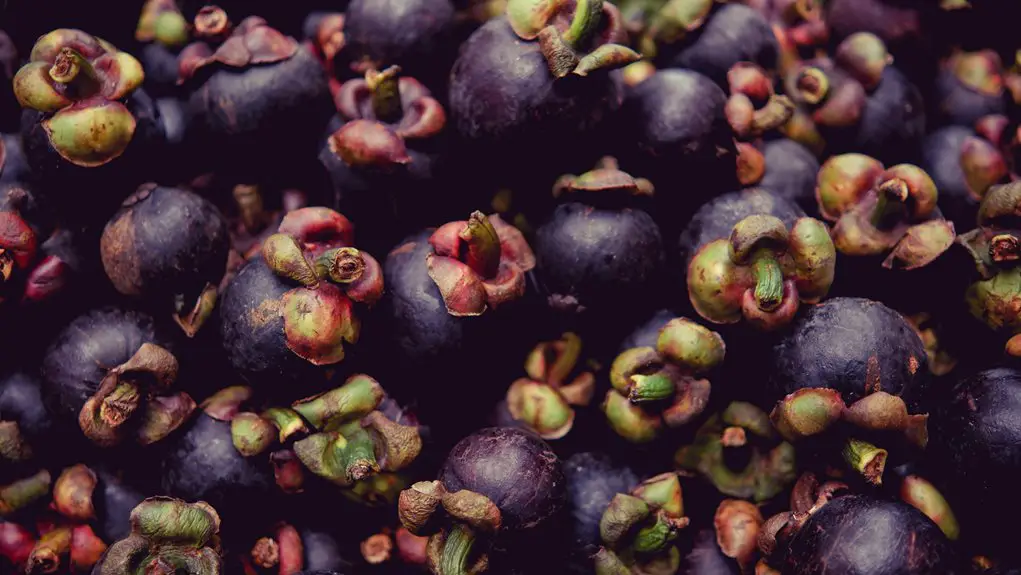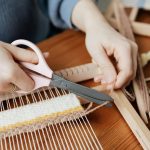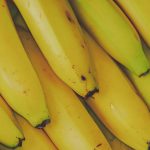If you’re looking for the key abaca fiber exporters in the Philippines, you’ll want to know about AmBisyon Fiber Corp in Davao, known for quality fibers, and Bicol Abaca Fiber Producers in Cebu, which uphold high standards. Companies like PhilFibre and Mindanao Abaca Exporters also stand out with advanced processing and strong global ties. These exporters shape the industry’s global reach, supporting farmers and innovation. Keep exploring to understand their impact and the industry’s growth.
Table of Contents
Key Takeaways
- AmBisyon Fiber Corp, based in Davao, is a leading exporter known for high-quality abaca fibers.
- Bicol Abaca Fiber Producers, located in Cebu, is recognized for maintaining strict quality standards.
- PhilFibre utilizes advanced processing techniques to supply premium abaca fibers globally.
- Mindanao Abaca Exporters maintain strong international buyer relationships and modern fiber processing.
- Small and medium enterprises support export diversification and innovation within the abaca fiber market.
Overview of the Abaca Industry in the Philippines
The abaca industry in the Philippines plays an essential role in the country’s economy, providing livelihoods for thousands of farmers and exporters.
The abaca industry sustains thousands of Filipino farmers and exporters, fueling economic growth nationwide.
When you look at the industry, you’ll see it’s centered primarily in regions like Bicol, Eastern Visayas, and Davao. These areas produce high-quality abaca fiber, which is in demand worldwide for its strength and durability.
You’ll find that small-scale farmers grow the majority of abaca, using traditional methods passed down through generations. As an exporter, you benefit from the fiber’s versatility, as it’s used in textiles, ropes, and even specialty papers.
The government supports the industry through programs that improve farming techniques and promote sustainable practices.
If you’re involved, you play an important part in maintaining the Philippines as the global leader in abaca fiber production.
Historical Background of Abaca Fiber Exportation
You’ll find that abaca fiber exportation has deep roots, starting from early trade with neighboring countries.
Over time, export markets expanded, shaping the industry’s growth and reach.
Let’s look at the pioneers who first brought abaca to the global stage.
Origins of Abaca Trade
Although abaca fiber has been cultivated for centuries in the Philippines, its trade gained significant momentum during the Spanish colonial period when global demand for its strong, lightweight fibers soared.
You’d find that abaca, also called Manila hemp, became an essential export because of its durability, especially for ropes and sails on ships. The Spanish recognized its economic potential and established trading routes, connecting the Philippines to markets in Europe and the Americas.
You’ll notice that local communities began organizing production around coastal areas, making abaca a crucial part of the economy. This early trade laid the groundwork for the Philippines to become the world’s leading supplier.
Understanding these origins helps you appreciate how abaca fiber shaped both local livelihoods and global commerce.
Evolution of Export Markets
Building on how abaca became a key export during the Spanish era, its markets have continuously shifted to meet changing global demands. You’ll see that early exports primarily targeted rope-making industries, but over time, sectors like paper and textiles expanded their use of abaca fiber. This evolution reflects how global needs influenced Philippine trade routes and partnerships.
| Era | Key Export Markets |
|---|---|
| Spanish Era | Europe (Rope Industry) |
| Early 20th C. | North America (Paper) |
| Post-WWII | Japan & East Asia |
| 21st Century | Global (Diversified Use) |
Understanding these shifts helps you grasp how Philippine abaca exporters adapted to stay relevant worldwide.
Early Exporter Profiles
Since the demand for abaca fiber grew steadily during the Spanish era, early exporters played a crucial role in establishing the Philippines as a reliable source.
You’d find that these pioneers laid the groundwork for today’s thriving industry by focusing on quality and expanding trade routes.
Here’s a quick look at the profiles that shaped early abaca exportation:
- Spanish colonial traders who first organized large-scale collection and shipment.
- Local Filipino merchants who managed plantations and negotiated with foreign buyers.
- Chinese intermediaries who facilitated connections between producers and international markets.
- Early cooperatives formed by farmers to improve bargaining power and production standards.
Top Abaca Fiber Exporting Companies
Several leading companies dominate the abaca fiber export market in the Philippines, each playing a vital role in sustaining the industry’s global reputation.
Leading Philippine companies uphold the abaca fiber export market and its global reputation.
When you look into top exporters, firms like Davao-based AmBisyon Fiber Corp and Cebu’s Bicol Abaca Fiber Producers stand out. They consistently deliver high-quality fibers that meet international standards.
You’ll also find companies such as PhilFibre and Mindanao Abaca Exporters, which use advanced processing techniques to enhance fiber strength and durability.
These exporters maintain strong relationships with global buyers, ensuring steady demand and competitive pricing.
Role of Small and Medium Enterprises in Abaca Export
While major companies lead the abaca export market, small and medium enterprises (SMEs) play a significant role in expanding the industry’s reach.
You can see how SMEs contribute by:
- Diversifying Products – SMEs often create niche abaca products, appealing to various international markets.
- Boosting Local Economies – They generate jobs and support local farmers by sourcing raw materials directly.
- Encouraging Innovation – These enterprises experiment with new processing techniques and sustainable practices.
- Enhancing Supply Chain Flexibility – SMEs adapt quickly to changing market demands, helping stabilize supply.
Government Support and Regulations for Exporters
Although abaca exporters face many challenges, the Philippine government actively supports the industry through regulations and programs designed to promote competitiveness and sustainability.
You’ll find that agencies like the Department of Agriculture and the Fiber Industry Development Authority (FIDA) provide technical assistance, quality control standards, and financial aid to help you improve your production and meet export requirements.
The government also enforces certifications and environmental regulations that guarantee your products meet international market standards.
Additionally, tariff incentives and export facilitation services reduce barriers, making it easier for you to enter global markets.
Export Destinations and Global Market Reach
You’ll find that the Philippines exports abaca fiber mainly to countries like Japan, the United States, and Europe.
To grow their reach, exporters are using targeted strategies to enter new markets and strengthen existing ones.
Let’s explore how these efforts shape the global presence of Philippine abaca fiber.
Major Export Countries
The Philippines exports abaca fiber to over a dozen countries, with Japan, the United States, and China leading as the top buyers.
When you look at major export countries, these markets dominate due to their demand for durable, eco-friendly fibers.
Here’s the breakdown you should know:
- Japan – tops the list, using abaca in textiles and specialty papers.
- United States – strong demand for industrial and home furnishing products.
- China – growing market for composite materials and handicrafts.
- European Union – particularly Spain and Germany, importing for paper and cordage industries.
Market Expansion Strategies
Since global demand for abaca fiber keeps rising, exporters are actively exploring new markets and refining their strategies to expand reach.
You’ll notice many are targeting emerging economies in Asia and Europe, where eco-friendly materials are gaining traction. They also diversify export destinations to reduce dependency on a few countries, ensuring more stable revenue streams.
By participating in international trade fairs and leveraging digital platforms, you can connect directly with global buyers, boosting visibility. Collaborating with government agencies helps you access export incentives and market intelligence.
Additionally, some exporters focus on value-added products, making their offerings more attractive worldwide.
Adopting these market expansion strategies positions you to capitalize on growing opportunities and strengthen your foothold in the global abaca fiber market.
Innovations and Sustainable Practices in Abaca Exporting
Although abaca fiber has long been a staple export for the Philippines, exporters are now embracing innovations and sustainable practices to meet global demand and environmental standards.
You’ll notice these efforts focus on improving quality and reducing environmental impact. Here are four key areas where they’re making strides:
- Implementing eco-friendly harvesting techniques to preserve soil health.
- Using natural fiber processing methods that minimize chemical use.
- Investing in technology to enhance fiber strength and durability.
- Promoting fair trade practices that support local farmers and communities.
Economic Impact of Abaca Fiber Exports
Embracing sustainable innovations in abaca exporting doesn’t just benefit the environment—it also boosts the Philippine economy.
When you support abaca fiber exports, you contribute to an essential source of income for thousands of Filipino farmers and workers. The abaca industry generates significant foreign exchange earnings, strengthening the country’s trade balance.
You’ll see local communities thrive as export revenues fund infrastructure, education, and healthcare improvements. Additionally, abaca’s global demand encourages investments in research and development, creating jobs beyond farming—like processing and marketing roles.
Challenges Faced by Abaca Fiber Exporters
When you plunge into the world of abaca fiber exporting, you quickly realize that several challenges can impact the industry’s growth. You’ll face issues that test your resilience and adaptability.
Here are four key challenges you must navigate:
- Climate Vulnerability – Abaca plants are sensitive to typhoons and pests, which can drastically reduce yield.
- Supply Chain Disruptions – Logistics inefficiencies and transportation delays often affect timely exports.
- Price Fluctuations – Global demand and competition cause unpredictable pricing, impacting your profit margins.
- Limited Access to Technology – Small-scale growers and exporters struggle with modern processing tools, lowering fiber quality.
Understanding these obstacles helps you anticipate risks and develop strategies to sustain your role in the abaca fiber export market.
Frequently Asked Questions
How Is Abaca Fiber Harvested and Processed?
Imagine revealing nature’s treasure: you cut abaca stalks, strip their layers, then soak and beat fibers to reveal their strength. You’ll dry and bundle them, turning raw plants into durable threads ready for weaving.
What Are the Common Uses of Abaca Fiber?
You’ll find abaca fiber used in ropes, mats, and paper products because it’s strong and durable. It’s also popular in handicrafts and eco-friendly packaging, making it a versatile material for various industries.
How Does Abaca Fiber Quality Vary by Region?
Quality varies widely—like a river’s flow changing with the land. You’ll find fibers from Bicol are strong and fine, while Mindoro’s offer coarser strands. So, your choice depends on your specific needs.
What Environmental Benefits Does Abaca Cultivation Offer?
You’ll find abaca cultivation reduces soil erosion, improves soil fertility, and promotes biodiversity. It requires minimal chemical inputs, so it’s eco-friendly and supports sustainable farming, helping preserve the environment while producing valuable fibers.
Are There Any Certifications for Sustainable Abaca Fiber?
Yes, you can find certifications like FSC and Rainforest Alliance for sustainable abaca fiber. These guarantee the fiber is responsibly sourced, helping you support eco-friendly practices and promote environmental protection in your supply chain.
- The Use of Nonwovens in Construction and Civil Engineering - July 11, 2025
- The Use of Nonwovens in Construction and Civil Engineering - July 11, 2025
- The Use of Nonwovens in Construction and Civil Engineering - July 11, 2025







